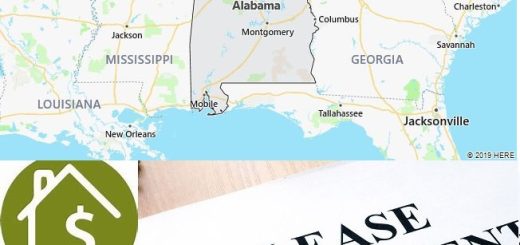Geography of Lake County, Ohio
Lake County, located in the northeastern part of Ohio, is characterized by its scenic landscapes, thriving communities, and proximity to Lake Erie. This comprehensive overview explores the county’s population dynamics, climate patterns, prominent rivers and lakes, and other noteworthy geographical features, offering insights into the region’s natural and cultural heritage.
Population
Lake County has an estimated population of approximately 230,000 residents as of the latest census data. It is one of the most populous counties in Ohio, known for its diverse communities, strong economy, and high quality of life. The county seat, Painesville, serves as the administrative, cultural, and economic center of the region, boasting historic landmarks, cultural institutions, and a vibrant downtown area. Check Simplyyellowpages.com to learn more.
Other notable communities within Lake County include Mentor, Willoughby, Eastlake, and Wickliffe, each with its own unique charm and character. The county’s population is predominantly urban and suburban, with a mix of residential neighborhoods, commercial districts, and industrial areas. Despite its urbanization, Lake County also features extensive green spaces, parks, and natural areas, providing residents with opportunities for outdoor recreation, nature appreciation, and wildlife observation.
Climate
Lake County experiences a humid continental climate, with warm summers, cold winters, and moderate precipitation throughout the year. The county’s climate is influenced by its proximity to Lake Erie, which moderates temperatures and contributes to the region’s weather patterns.
Summers in Lake County are typically warm and humid, with average temperatures ranging from the mid-70s to the low 80s Fahrenheit. Heatwaves are common during the summer months, with temperatures occasionally reaching into the 90s. Residents and visitors alike seek relief from the heat at the county’s numerous parks, beaches, and recreational facilities along the shores of Lake Erie.
Winters in Lake County are cold and snowy, with average temperatures ranging from the 20s to the 30s Fahrenheit. Lake-effect snowfall is a frequent occurrence during the winter months, particularly in areas close to the lake shore. The combination of cold temperatures and heavy snowfall can create hazardous driving conditions and impact daily life in the county.
Spring and fall are transitional seasons in Lake County, characterized by mild temperatures, blooming flowers, and changing foliage. These seasons offer ideal conditions for outdoor activities such as hiking, cycling, and enjoying the scenic beauty of the county’s parks and natural areas.
Rivers and Lakes
Lake County is named for its proximity to Lake Erie, one of the Great Lakes, which forms its northern border. In addition to Lake Erie, the county is home to several rivers, streams, and inland lakes, which play vital roles in shaping the landscape, supporting ecosystems, and providing recreational opportunities for residents and visitors alike.
Grand River:
The Grand River is the largest river in Lake County, flowing through the eastern part of the region before emptying into Lake Erie. The river supports diverse riparian habitats, including wetlands, forests, and meadows, and provides habitat for fish, birds, and other wildlife. The Grand River also offers opportunities for fishing, boating, and wildlife observation, with several access points and recreational areas along its banks.
Chagrin River:
The Chagrin River forms the western border of Lake County, separating it from neighboring Cuyahoga County. The river originates in Geauga County and flows southwestward through Lake County before emptying into Lake Erie. The Chagrin River supports a variety of recreational activities, including fishing, kayaking, and birdwatching, and provides important habitat for migratory birds, waterfowl, and other wildlife.
Inland Lakes:
In addition to its rivers and streams, Lake County features several inland lakes, which provide opportunities for fishing, boating, and water recreation. Painesville Township Park Lake, located in Painesville Township, is a popular destination for anglers seeking bass, bluegill, and catfish. Other lakes in the county include LaDue Reservoir, Headlands Beach State Park, and Mentor Lagoons Nature Preserve and Marina, each offering unique recreational amenities and natural attractions.
Parks and Natural Areas
Lake County is home to several parks, nature reserves, and outdoor recreation areas that showcase the region’s natural beauty and cultural heritage.
Lake Metroparks:
Lake Metroparks is a system of parks and nature preserves located throughout Lake County, offering a wide range of recreational activities and educational programs for visitors of all ages. Highlights of the park system include the Holden Arboretum, a botanical garden and arboretum featuring over 3,600 acres of gardens, woodlands, and hiking trails; the Penitentiary Glen Reservation, a nature preserve and wildlife sanctuary with scenic overlooks, hiking trails, and nature exhibits; and the Chapin Forest Reservation, a forested park with miles of hiking and mountain biking trails, picnic areas, and scenic vistas.
Headlands Beach State Park:
Headlands Beach State Park is located on the shores of Lake Erie in Mentor, Ohio, and is known for its expansive sandy beach, towering sand dunes, and scenic views of the lake. The park offers opportunities for swimming, sunbathing, picnicking, and beachcombing, as well as hiking trails, birdwatching, and nature photography. Headlands Beach State Park is also home to the Headlands Dunes State Nature Preserve, a protected area of sand dunes and coastal habitats that provides habitat for rare plants and animals.
Conclusion
Lake County, Ohio, offers a unique blend of natural beauty, cultural heritage, and outdoor recreation opportunities. From its scenic shores of Lake Erie to its pristine rivers, lakes, and parks, the county’s geography reflects its rich history, diverse ecosystems, and strong sense of community pride. As Lake County continues to grow and develop, its geography will remain a defining aspect of its identity, shaping the lives and experiences of its residents for generations to come.





